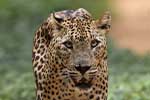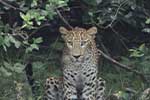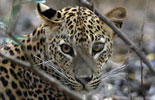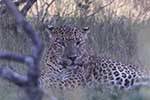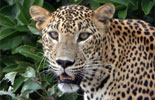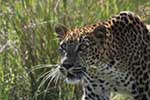
This study is dedicated to my friend, the late Dr. Ravi Samarasinha who was one of the greatest wildlife researchers of our times. At the time of his sudden death in January 2007 Ravi was widely known for his expert knowledge on the study of individual leopards in Yala National Park. The following paragraph is from an article he wrote on “Using photographic identification to study the leopards of Yala”.
 “During the last two decades, identification of individual animals has been widely recognised as a vital component of modern wildlife research. Individual identification provides a non-invasive, simple, and inexpensive means of following animal movements and behaviour. This, over a period of time, provides information of the area or home range the animal uses, and in turn, assists wildlife researchers to determine the area required by the species for its survival. Individual identification studies also provide an insight to individual animal behaviour, which can be distinctly different from the accepted and known behaviour of the species as a whole. These studies also provide a range of other important data such as, the spacing of litters, age of cub dispersal, and lifespan in the wild.”
“During the last two decades, identification of individual animals has been widely recognised as a vital component of modern wildlife research. Individual identification provides a non-invasive, simple, and inexpensive means of following animal movements and behaviour. This, over a period of time, provides information of the area or home range the animal uses, and in turn, assists wildlife researchers to determine the area required by the species for its survival. Individual identification studies also provide an insight to individual animal behaviour, which can be distinctly different from the accepted and known behaviour of the species as a whole. These studies also provide a range of other important data such as, the spacing of litters, age of cub dispersal, and lifespan in the wild.”
- Dr. Ravi Samarasinha
Leopards of Wilpattu 
Study Of Individual Leopards In Wilpattu Using Photographic Identification
The author of this site started visiting Wilpattu National Park regularly from 2011 and started to study the fauna and flora of the park including individual leopards using photographic identification. He uses his photographic equipment primarily to capture images to aid his study. These images are then enlarged on a computer and the selected area of the leopards skin is carefully compared with the photos of his database in order to determine the accurate identity of each leopard. The pattern of spots and rosettes on the coat, head and muzzle of leopards are individually unique. The names given for individual leopards on this page are based in the chronological order of the sighting of each animal by the author from a given location. The letter “C” is added to the code if the animal was first recorded as a cub (estimated age at the first sighting is less than one year). Notes on observations with photographs, the GPS reading of each sighting and a Google map with all the sightings by the author is provided for each leopard and is updated with each new sighting. A list of all the sightings of the author and those of the guest leopard photographers is provided for each leopard in date order under “All sightings of Author and Guests”. As with every page on this site all the photos can be enlarged for better viewing by simply clicking on them.
Wherever possible the author has uploaded photos of individual leopards from all possible angles to facilitate accurate identification. Even though the spot/rosette patterns on the head, forehead and the face of a leopard helps one, in most instances, to accurately identify the animal it is always prudent to photograph a leopard from as many angles as possible for purposes of identification. During some brief sightings one may not be able to photograph the head but only some other part of the body such as the flanks or the tail. However one also needs to be mindful as the angle of the photo can easily distort the spot/rosette patterns of a leopard. Being aware of the location where your leopard was photographed will make it easier for you to locate your leopard/s on this page.
In the event you have photograph a leopard at Wilpattu and wish to contribute to this study the author will appreciate receiving a low-resolution copy by email with the location and date of the sighting. Upon accepting the images the author will update the list of sightings of such leopard and up load them under each such photographer in the guest leopard photographer section.
The author will continue to visit the park as often as he can and up load his field notes, photos of leopards and update the filed guide in order to create interest and awareness of the elusive leopards and the fascinating fauna & flora of Wilpattu National Park.




























